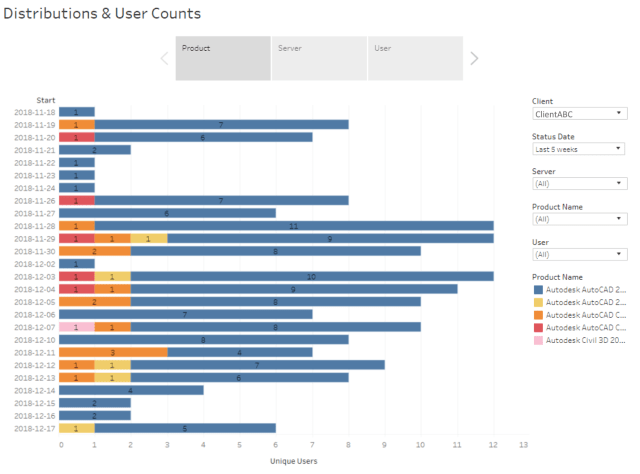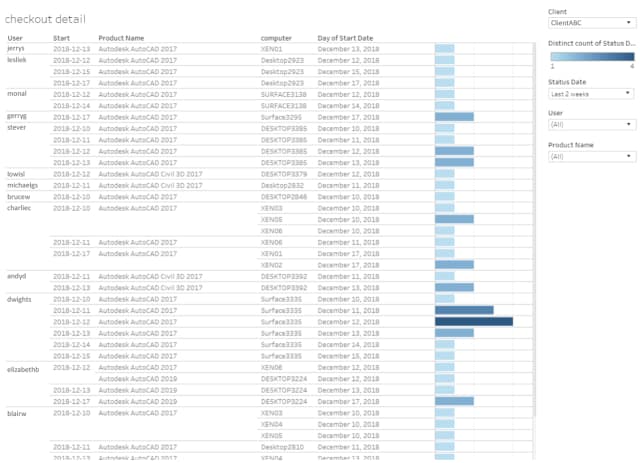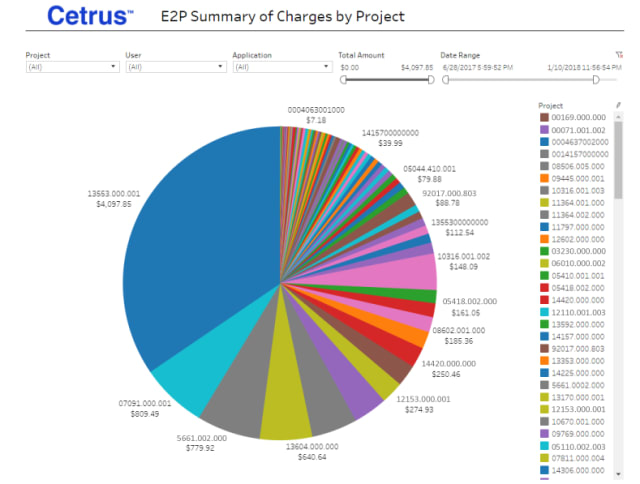This is a problem that plagues any organization, regardless of whether they’re big or small: do you really need to get that many licenses for a piece of software?
It’s difficult to estimate just how many licenses a business needs, particularly when it’s something that not every person uses throughout the entire workday. As a result, organizations may end up with far more seats than are even necessary, adding a hefty tab to their annual license bills.

There may be a solution, however, via Cetrus, a company that has developed tools to meter software usage, thus making it possible for organizations to calculate in precise detail how often an application is used. While the most obvious use case for such a tool would be to narrow down the exact number of licenses an organization really requires, thus saving annual costs, it becomes clear that such technology also opens up unique possibilities for managing project budgets, worker productivity, and even the training of new employees.
We spoke to Lora Dominick, director of Cetrus, to learn what the company offers and how these solutions can be used to trim the fat for an organization.
Wasted Time Is Wasted Money
Cetrus was founded based on an operational need at its parent company, an international engineering company called ENGEO. Due to the size of ENGEO’s operations, the number of various software platforms in use is quite substantial, making the management of licenses, version control, concurrent usage and other issues more difficult. To tackle the problem, Cetrus was formed.
“We launched Cetrus to develop a tool that would give us essentially a two-faceted value proposition. One is that it would reduce our expenses by optimizing the number of licenses we need to purchase for any given application,” Dominick explained. “The other is that it would allow us to recover our software costs by assigning usage sessions to particular projects and then, through our normal client invoicing, charge the clients back for the usage that is attributable to the project.”

According to Dominick, on average any given company is about 30 percent over-licensed, making this a problem that goes beyond ENGEO’s own management difficulties. To better understand how this works, it’s necessary to know how Cetrus’s tools work. The Cetrus Process Meter (CPM) comes with a number of plug-ins that make it possible to track software usage across an organization with a high level of granularity.
The Activity Monitor plug-in does exactly what it sounds like, monitoring whether a piece of software, or pieces of software, is active, inactive or timed out in realtime, down to the second. This makes it possible to determine how efficiently and widely an application is used within an organization. That way, when it comes time to renew software subscriptions, only the actual number of seats required can be purchased.
Moreover, the tool enables individual users or a group-wide admin to know whether or not a given application has maxed out the number of users allowed. So, for example, if a company has 50 seats of a given CAD program and all of them are in use, the tool can visualize whether all 50 seats are actually active or if some people have just left the software open while they went on to do other things. That way, a 51st user can find a colleague who’s timed out of their CAD platform and ask them to close it so that a new person can log in.

Because the tool can be used with any application, it’s possible to examine every software an organization has, from Word to AutoCAD. With the License Manager Agent Plug-in and the Software Inventory Plug-in, a business can perform an audit of every program it owns, as well as what licenses are actually being used, so that when renewal rolls around, the organization can shed the applications or licenses that aren’t used. A Hardware Inventory tool can also be used to manage an organization’s hardware, allowing the IT department to identify machines that need upgrades, those that have enough memory for installations and have an understanding of how to address fixes.
While this information, which can be visualized with a variety of reporting methods, can be used to cut costs, CPM also includes an Expense-2-Project (E2P) module that can bring in more funds, as Dominick mentioned.

When working on a project for a client, users can tag a software usage session with a project ID so that, when it comes time to bill the customer, that activity can be included in the final invoice. That way, the overhead expenses of a software license can be offset by the amount billed to the client. At the same time, new application licenses can be justified to management by their revenue-generating capabilities.
Unique Uses
Dominick pointed out that, though the aforementioned uses are what Cetrus had in mind when developing its platform, there have been use cases that go beyond that original vision. Once usage data is collected, it can be used however the user wants.
Dominick relayed that a recent customer wanted to use CPM for productivity monitoring. Though no employee likes to know that their boss is watching them, it can obviously be useful for performance reviews and need not be the basis of punitive measures. Instead, it can open up the opportunity for employee training.
For instance, another Cetrus customer began using the tool to understand how new hires differ from other staff in their use of applications. What the company discovered was that new hires were actually getting stuck using Microsoft Outlook, most likely due to the fact that other email platforms, like Gmail, are more common in non-professional settings.
“That can change up your whole training and onboarding approaches,” Dominick said.“It wasn’t that the new hires were struggling with the technical specialized software. It was the resident software.” This could mean requiring Outlook experience in a new job posting or simply spending more time on Outlook training when a new hire joins the team.
Dominick also highlighted how customers might have one intended use for CPM before discovering other new ones. One client purchased CPM to monitor AutoCAD usage, but before the company did, it was time for a renewal of the firm’s Adobe Creative Cloud Suite licenses. The customer immediately found that it had too many licenses before it had even set about analyzing its AutoCAD numbers, with the subsequent Creative Cloud Suite cuts allowing it to save tens of thousands of dollars.
Perhaps most unique are the applications for Cetrus’s Independent Software Vendor (ISV) tool, separate from CPM package. Most programs are now offered with perpetual licenses, a subscription, or on a software-as-a-service basis. With the ISV platform, it’s possible to, instead, sell software based on usage.
This is particularly useful for programs that may only be used intermittently. A publisher can sell time or tokens on a per-use basis. Dominick likened this model to renting a Zipcar. Rather than purchasing or leasing a car, one could rent a Zipcar for an hour.
“The ISV model is like a Zipcar. You only pay for what you use,” Dominick said.“If you need the occasional usage, it makes perfect sense. Especially if you can charge that usage ultimately to your client by attaching that usage to a particular project. Of course, if you use it 10 hours a day every day, you wouldn’t get a Zipcar, you would purchase a car or lease a car.”
Reducing Licenses
According to Uri Eliahu, CEO of ENGEO, CPM has become vital to the company’s operations. After monitoring the use of AutoCAD licenses at the firm for a few months, ENGEO was able to cut metered AutoCAD use by 30 percent and reduce another application’s licenses by 50 percent. The company is also able to recover the cost of an annual AutoCAD subscription with fewer than 100 hours of billable use time by employing the E2P module.
According to another case study, a 300-person architecture firm was able to cut its licenses by 47 percent. It also saved $107,000 in licensing fees associated with Autodesk software.
In a world overrun with inefficiency, tools like those offered by Cetrus may become increasingly vital. To learn more, visit the Cetrus website, where you can sign up for a 30-day free trial to determine if CPM is something that could be valuable to your organization.
Cetrus has sponsored this post. They have had no editorial input to this post. Unless otherwise stated, all opinions are mine. —Michael Molitch-Hou
[“source=engineering”]

